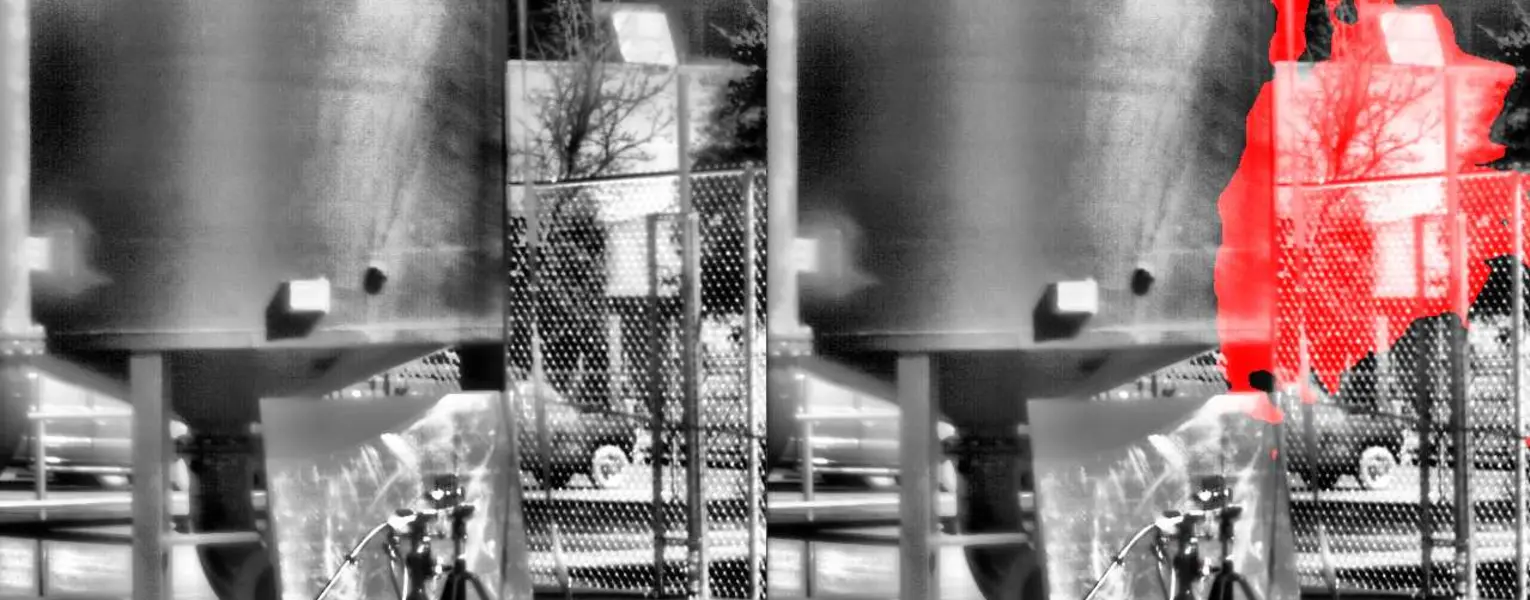Methane leaks can occur near valves, compressors, and pipelines where natural gas is gathered, transported, or distributed. Methane, the primary constituent of natural gas, is a powerful greenhouse gas. Timely methane leak detection in remote areas is a significant need across the energy industry.
Autonomous Methane Leak Detection
SwRI helps industry and regulators develop solutions that autonomously detect methane leaks in remote areas using sensors, infrared cameras, Machine Learning Technologies, and artificial intelligence.
- Methane Sensors – SwRI combines expertise in sensor fusion, mechanical systems, and fluids engineering to develop sensor-based methane detection technology for government and industry clients.
- Infrared Cameras – We use infrared cameras in coordination with advanced algorithms to process images of both gas and liquid hydrocarbon leaks. Our technology can distinguish different emissions and liquid leaks with minimal false alarms.
Methane Detectors Challenge
SwRI performs research and testing for technology developers and end users of methane sensors. This work has included collaboration with the Environmental Defense Fund as part of the Methane Detectors Challenge. SwRI can provide laboratory and field-like conditions for developing and validating various technologies.
Pipeline & Facilities Leak Detection
Visit Fugitive Emission Test & Cryogenic Testing for leak detection in pipelines and compressor stations using Flow Component Testing.
SwRI specializes in autonomous sensing solutions for early detection of leaks from both hazardous liquids and gas pipelines. The Smart LEak Detection (SLED) system uses COTS optical sensors and machine learning techniques to reliably detect the chemical fingerprint of small liquid leaks.
Winner of a 2017 R&D 100 Award, SLED uses advanced deep learning algorithms to overcome many of the shortcomings of today’s technologies, reliably detecting small liquid leaks through varying environmental conditions. SLED is able to detect small hazardous liquid leaks of crude oil, gasoline, diesel and mineral oil and classify these different substances in real-time. SLED is able to operate fully unmanned and perform leak detection in less than five seconds. The technology can be deployed using a variety of mobile and stationary platforms and can nimbly adjust to different sensors and technologies.
SLED can be deployed on stationary platforms at pumping stations, located about every 50 miles along the platforms. These are high-risk areas for leaks due to valves and specialized equipment that can fail. The technology can also be deployed on drones, helicopters, and manned aircraft to fly over long stretches of pipelines between stations. SLED is being adapted for the U.S. Department of Energy (DOE) to detect methane leaks.
For more information about methane leak detection, please contact Shane Siebenaler at +1 210 522 5758.

